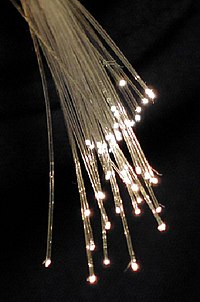
Photo from wikipedia
Abstract In this work, the stability, structural, electronic, and optical properties of the ZnAl 2 O 4 (110) surface have been investigated by using the first-principles method based on the… Click to show full abstract
Abstract In this work, the stability, structural, electronic, and optical properties of the ZnAl 2 O 4 (110) surface have been investigated by using the first-principles method based on the density functional theory. The obtained results show that the AlO 2 -terminated surface is more stable than the ZnAlO 2 -terminated surface under O-rich and Al-poor conditions, while the ZnAlO 2 surface termination is the most stable under O-poor and Al-rich conditions. The results of structural relaxation show that, for both surface terminations, the most noticeable change in the interlayer distances occurs in the four outermost layers only. In addition, our results also show that the electronic structure and properties of these two surfaces are very different. The work function of the ZnAlO 2 -terminated surface was found to be 2 times smaller than that of the AlO 2 surface. Moreover, the effect of oxygen vacancies on the properties of the ZnAl 2 O 4 (110) polar surfaces was investigated in details. We find that the formation energy of V O in the case of the AlO 2 -terminated surface is lower than that of the ZnAlO 2 -terminated surface. Our results show that the formation of oxygen vacancies affects greatly the electronic and optical properties of the ZnAl 2 O 4 (110) surface. We found also that, at high temperatures, the O-deficient AlO 2 -terminated surface is more stable than the clean surface.
Journal Title: Surface Science
Year Published: 2018
Link to full text (if available)
Share on Social Media: Sign Up to like & get
recommendations!